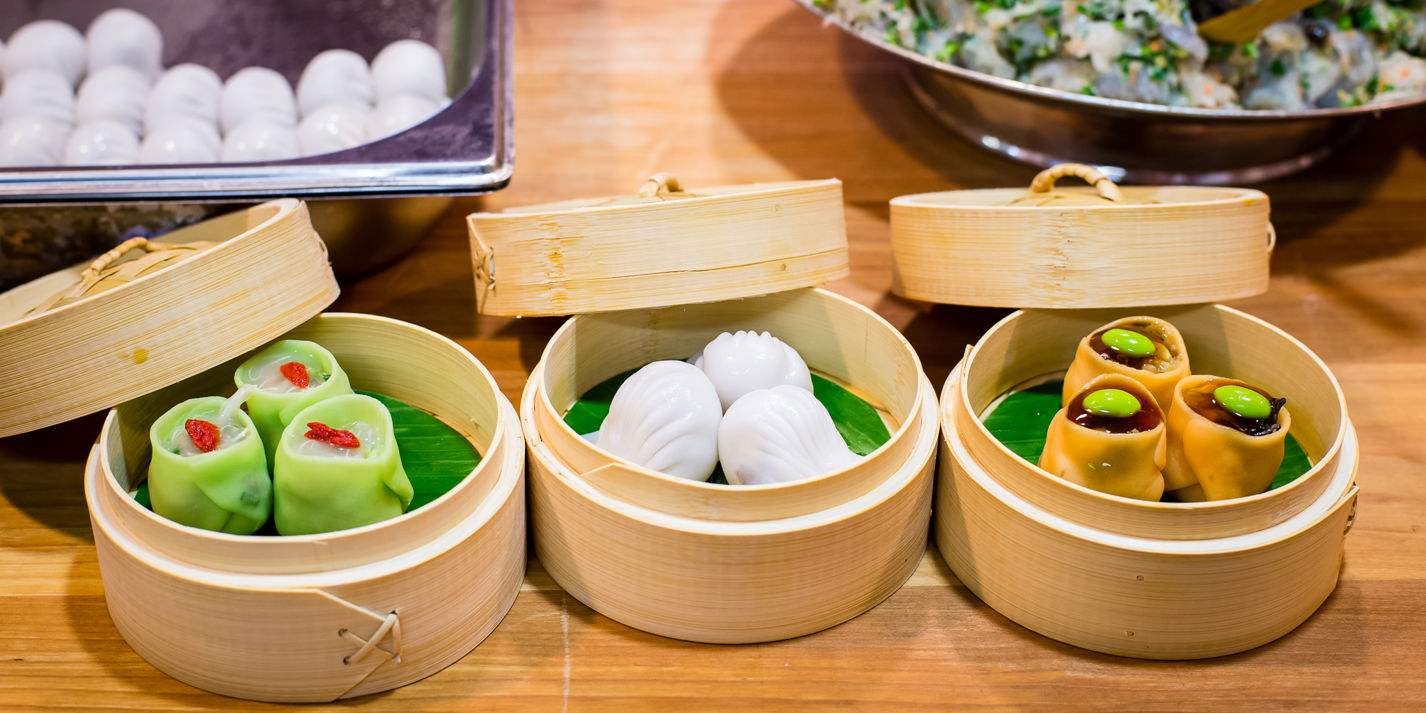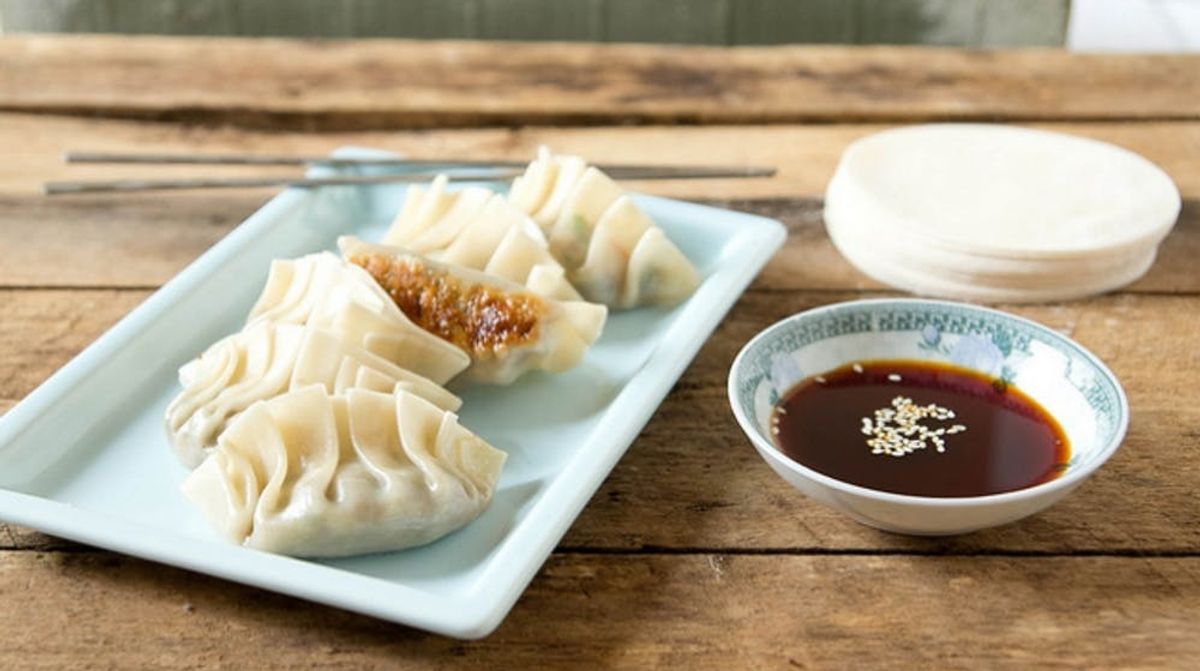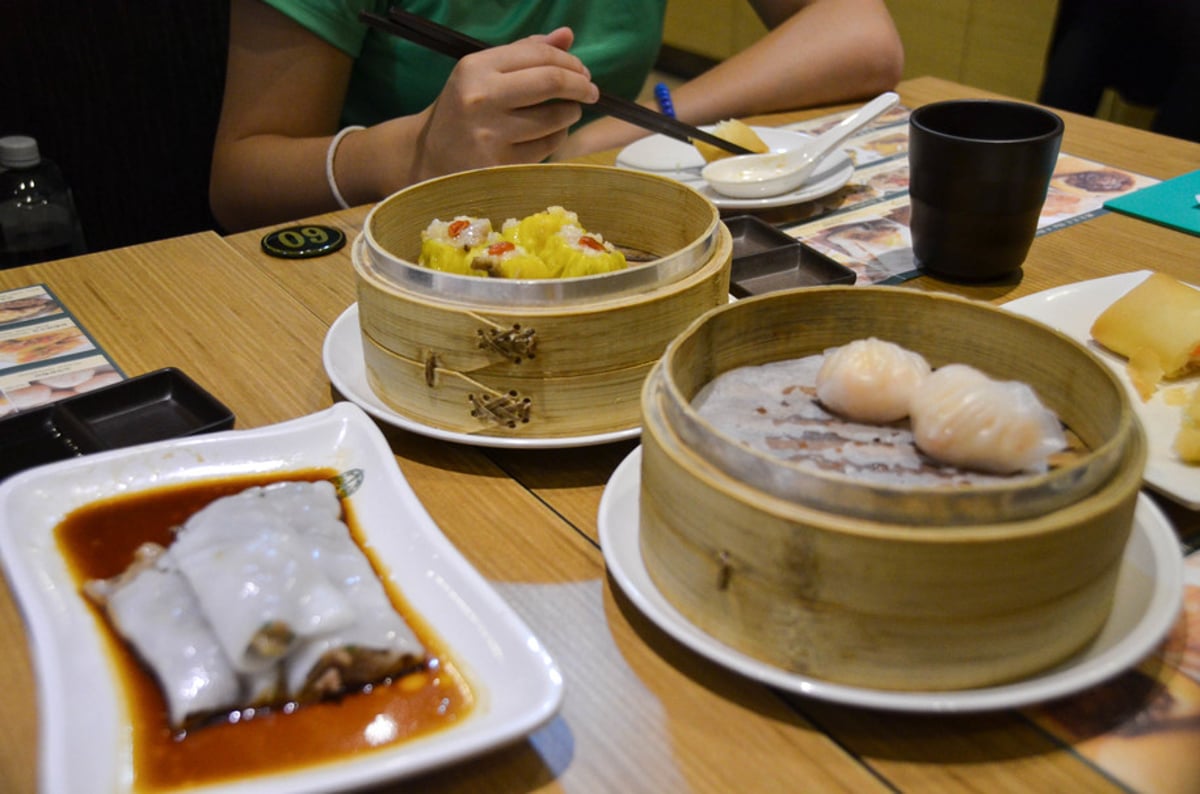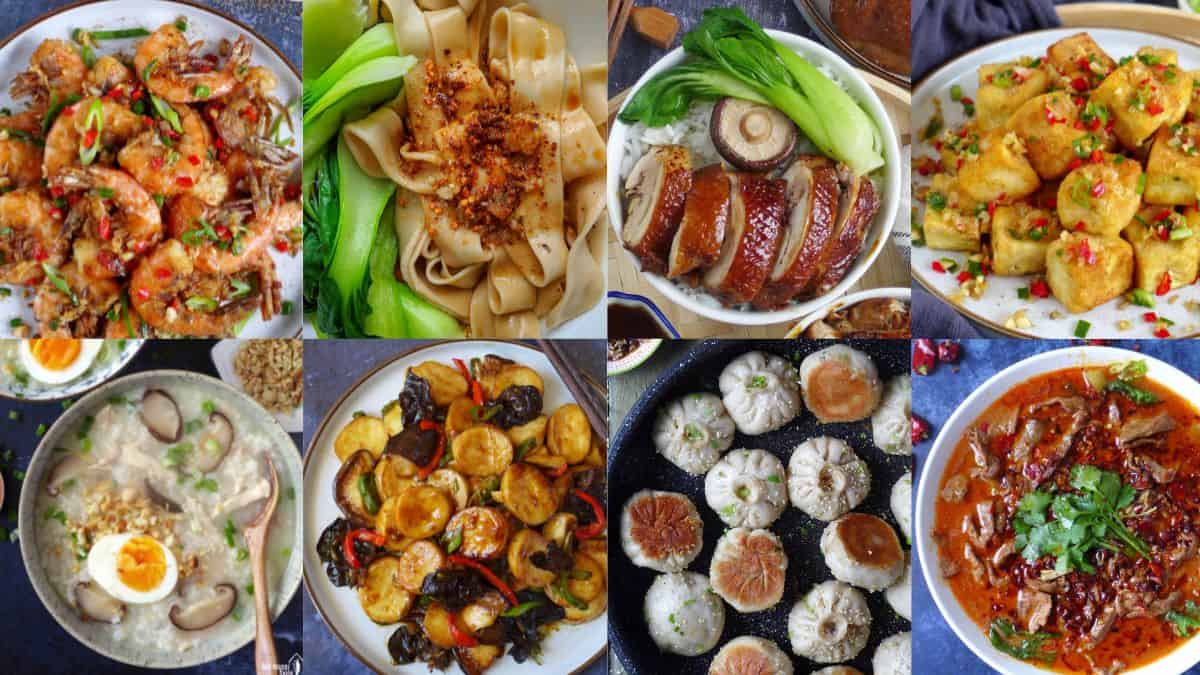Dim sum
dianxin, 点心, ติ๋มซำ
Dim sum is a large range of small Chinese dishes that are traditionally enjoyed in restaurants for brunch. Most modern dim sum dishes are commonly associated with Cantonese cuisine, although dim sum dishes also exist in other Chinese cuisines. In the tenth century, when the city of Canton (Guangzhou) began to experience an increase in commercial travel, many frequented teahouses for small-portion meals with tea called "yum cha" (brunch). "Yum cha" includes two related concepts. The first is "jat zung loeng gin" (Chinese: 一盅兩件), which translates literally as "one cup, two pieces". This refers to the custom of serving teahouse customers two delicately made food items, savory or sweet, to complement their tea. The second is dim sum, which translates literally to "touch the heart", the term used to designate the small food items that accompanied the tea. Teahouse owners gradually added various snacks called dim sum to their offerings. The practice of having tea with dim sum eventually evolved into the modern "yum cha". Cantonese dim sum culture developed rapidly during the latter half of the nineteenth century in Guangzhou. Cantonese dim sum was originally based on local foods. As dim sum continued to develop, chefs introduced influences and traditions from other regions of China. Cantonese dim sum has a very broad range of flavors, textures, cooking styles, and ingredients and can be classified into regular items, seasonal offerings, weekly specials, banquet dishes, holiday dishes, house signature dishes, and travel-friendly items, as well as breakfast or lunch foods and late-night snacks.
Source: Wikipedia
Recipes

:max_bytes(150000):strip_icc()/SPRE_SocialImage-no-transparency-5ad5fc0bc5542e00362c0baa.png)

:max_bytes(150000):strip_icc()/tansuo-dim-sum-FT-BLOG1117-29a99585c48b4897bf8152837f243c0f.jpg)





:max_bytes(150000):strip_icc()/social_image_placeholder-1be03e498cce4b6c843ac910b2c7c9aa.png)
